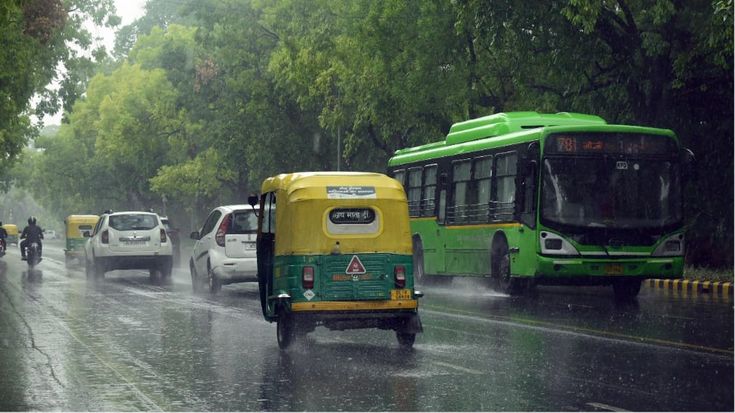July 24, 2025
New Delhi – Heavy rain returned with a vengeance to the Delhi-NCR region on Saturday evening, flooding streets, halting traffic, and disrupting normal life across the capital. The India Meteorological Department (IMD) issued a red alert for the next 48 hours, warning of more intense downpours in parts of Delhi, Noida, Ghaziabad, and Gurugram.
As someone reporting on regional and public interest issues for over five years, I have witnessed how erratic monsoon patterns have increasingly affected daily life in India’s most urbanized zones. The scenes unfolding in Delhi are not new — but each year, the impact seems deeper, the damage more widespread, and the preparedness less effective.

What the IMD Alert Says
According to IMD officials, Delhi recorded 89 mm of heavy rain in just six hours on Saturday, leading to waterlogging in key areas like Connaught Place, Rajouri Garden, Laxmi Nagar, and Dwarka. The red alert is a signal of “extremely heavy rain” with the potential to disrupt transportation, power, and essential services.
IMD Director-General Mrutyunjay Mohapatra said in a press statement, “Delhi and surrounding NCR regions are likely to receive intense spells of rain through Sunday and Monday. Thunderstorms and lightning are expected to accompany showers in localized areas.”
Real Impact on the Ground
In several parts of Delhi, commuters found themselves stranded in traffic snarls that lasted more than two hours. Rajesh Gupta, an Ola driver from East Delhi, told SBKI News, “I was stuck near ITO for nearly 90 minutes. Water was almost knee-deep, and traffic policemen seemed helpless.”
Due to transportation issues and kid safety concerns, schools in Noida and several areas of South Delhi have declared that they will be switching to online instruction for the next two days.
Employees were observed trudging through flooded roadways in Gurugram’s Cyberhub neighborhood, while other offices permitted early dismissal to prevent evening mayhem.
Drainage Woes Continue
Despite promises from civic agencies, waterlogging remains a chronic problem in Delhi. The Public Works Department (PWD) claimed to have desilted over 80% of drains before the monsoon, yet images shared on social media tell a different story — overflowing manholes, submerged roads, and residents draining water from their homes manually.
One of the most affected areas was South Extension, where local shopkeepers reported property damage. “Water entered the basement of my showroom, damaging stock worth lakhs,” said Ashok Jain, a garment retailer.
Emergency Services on Alert
The Delhi Disaster Management Authority (DDMA) has instructed district magistrates to stay on high alert. National Disaster Response Force (NDRF) teams have been stationed in flood-prone zones like Yamuna Bazar and Khadar areas, which are already witnessing rising water levels in the Yamuna River.
Hospitals, including LNJP and Safdarjung, have been asked to activate emergency response protocols, especially in light of power backup failures witnessed in previous rain events.
Personal Insight: The Rain Tells a Bigger Story
As someone who has been covering Delhi and nearby states for five years, I see these rains not just as weather events, but as symptoms of deeper infrastructure and climate challenges. The red alert is a warning not just from IMD, but from nature itself — urging better city planning, sustainable drainage systems, and public awareness.
Over the years, Delhi’s population has outpaced its infrastructure. heavy Rain, which should ideally nourish and replenish, now paralyzes the city. The need of the hour is not just emergency response, but long-term adaptation planning.
IMD’s Advisory for Citizens
Avoid traveling unless absolutely necessary.
Stay away from low-lying or flood-prone areas.
Don’t touch electrical poles or wires in flooded zones.
Use public transport wherever possible, as private vehicles may get stuck.
Conclusion
The situation in Delhi-NCR underscores the growing vulnerability by heavy rain of Indian cities to climate-linked disruptions. As the red alert continues, residents must stay cautious, and authorities must act with urgency — not just in response, but in prevention.


